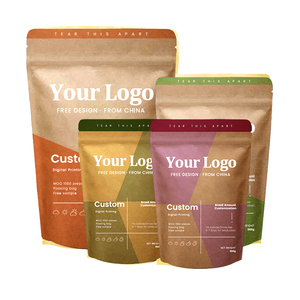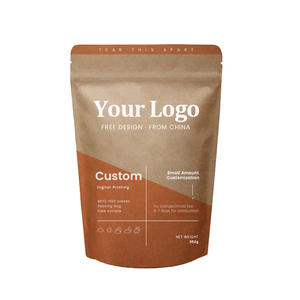
All categories
Featured selections
Trade Assurance
Buyer Central
Help Center
Get the app
Become a supplier

(60774 products available)



























A fully automatic bagging machine refers to any device or system that packs products into bags and seals them without any manual assistance. Fully automatic bagging machines are available in different models and can be customized to meet specific needs and requirements. Some of the popular types are as follows:
Powder Fully Automatic Bagging Machine:
The powder fully automatic bagging machine is commonly used in food processing and chemical industries. It can be used to pack various kinds of powders into bags, such as milk powder, talcum powder, flour, and more. The unit has an automatic feeding system and a bag-picking device for easy and quick feeding and picking of bags. It also has a multi-head weigher for accurate weighing and product distribution. This fully automatic bagging machine for powders is usually available in different weighing ranges to suit various products and packaging needs.
Granule Fully Automatic Bagging Machine:
The granule fully automatic bagging machine is ideal for packing small solid products and comes with similar features to the powder fully automatic bagging machine. It can be used to bag products like rice, candy, nuts, seeds, coffee beans, etc. Some options are a vibration feeder and an auger feeder for accurate and smooth product feeding.
Liquid Fully Automatic Bagging Machine:
Using gravity, a pump, or a liquid cup, the liquid fully automatic bagging machine is designed to easily and neatly pack liquids or semi-liquids, such as sauces, oils, juices, and other viscous substances. It prevents spills and ensures accurate filling. Depending on the model, it can come with a tilting device so that heavier products can be easily and smoothly inserted into the bags.
Multi Product Fully Automatic Bagging Machine:
This machine combines, weighs, and bags multiple products and ingredients according to a set recipe. The machine usually has a computer control system that can be used to change the formula, weight, bag size, and feeding speed. It is normally equipped with a food-grade stainless steel hopper and conveyor belts to meet hygienic standards. In addition, the machine may also include a batch weighing system so that it can bag a specified quantity of different types of food products.
Packaging machines typically come with a variety of specifications to suit different operational needs. Core specifications include the packaging speed, weight range, power supply, as well as the dimensions and construction material.
To keep the bagging machine running smoothly for many years, operators need to clean it regularly as well as lubricate moving parts. Using compressed air to blow off dust and debris from the machine is a good first step in cleaning. Then, operators can use a damp cloth to clean the surfaces and remove any spills. The drying process can be aided by using a blow dryer or allowing the machine to air dry.
While cleaning is important, it is the lubrication of moving parts that helps to prevent wear and tear. During maintenance, check all moving parts of the fully automatic bagging machine and apply the appropriate lubricant to keep them running smoothly. Don't forget to inspect the machine for any loose or damaged parts that may need repair or replacement.
Fully automatic bagging machines are widely used to package products in food and beverage industries. Bakery companies use these machines to package different types of loaves of bread, cookies, muffins, and other pastries.
Also, agricultural companies use them to package grains, seeds, fertilizers, and animal feed. However, agriculture isn’t the only industry that utilizes these machines. Here are more industries that use fully automatic bagging machines for packaging.
Textile and clothing manufacturers use fully automatic bagging machines to efficiently package and bag various textile products, including fabrics, curtains, blankets, and more.
Pharmaceuticals usually package their products in bags using well-sealed and labeled bagging machines. Fully automatic bagging machines ensure precise dosing, sealing, and labeling of pills, tablets, powders, liquids, and medical devices.
Hardware and tool companies package their small parts and pieces using fully automatic bagging machines. These are screws, bolts, nails, anchors, and other precise measuring hardware and tools.
Fully automatic bagging machines can package hundreds of thousands of units every hour without stopping. That’s why they are commonly used in the pet care industry to package pet food and accessories like toys, grooming tools, and training tools, among others.
When buying a fully automatic bagging machine for business, it is necessary to look at features that impact performance. Some of these essential qualities are as follows.
Capacity
The first thing to consider is the amount of product the machine can handle. Check the number of bags per hour. Find out the sizes and weights of products the machine can package. Compare these figures with demands to see if the machine can meet daily needs. Choosing a machine with sufficient capacity prevents bottlenecks in the workflow.
Modular design and customization
Look for a bagging machine with a modular design. This feature allows easy integration into existing systems. It also permits custom parts for unique requirements. Some customizable modules are feeder hoppers, conveyor lengths, and sealing mechanisms. A bagging machine with a modular design saves money on future expansions and ensures smooth additions when needed.
Precision
Accurate weight is vital for profitability. An oversize or underweight product can impact profit margins. An automatic bagging machine with precise dosing and weighing systems ensures consistent product amounts. Look for machines with fast weighing speed and low margins of error.
Compatibility with different bag types
Fully automatic bagging machines work with different bag types, such as zipper, gusset, or stand-up bags. Select the machine that can handle the most bag styles used. This flexibility will support future product innovations and limit the need for additional equipment.
The sealing mechanism
Apart from the number of bags the machine can produce, the sealing mechanism is also vital. Options like heat seals, ultrasonic, impulse, or thread sealing methods all have individual pros and cons. Choose a bagging machine with the most effective sealing type for the desired bag material and product. The seal must be strong enough to avoid returns due to leaks.
Automation and integration
Fully automatic bagging machines come at different levels of integration and automation. Consider the production line's required automation level. For large-scale production, a machine that automatically feeds, measures, seals, and labels bags is ideal. In small to moderate manufacturing settings, a less automated and more manual bagging machine may suffice.
Ease of operation
An easy-to-use automated bagging machine helps staff work efficiently and cuts down on training time. Prioritize machines with intuitive controls, clear dashboards, and standardized parts. Documented assembly instructions and operational manuals should come with the machine. Finding equipment with these traits improves staff productivity and limits downtime caused by mechanical issues.
Energy efficiency
An energy-efficient fully automatic bagging machine consumes less power. It also has features like standby modes that reduce energy use when the machine is not working. A fully automatic machine with good energy-saving systems cuts production costs and decreases the facility's carbon footprint.
After-sales service
The supplier's service level after selling the bagging machine is also important. Ask the supplier about their maintenance plans, spare parts supply, and repair services. Choosing a supplier with dependable service protects the bagging machine investment and keeps the production line running smoothly.
Q1: What are the benefits of using a fully automatic bagging machine in packaging operations?
A1: The benefits include increased efficiency, higher accuracy, cost-effectiveness, faster speed, improved safety, better product integrity, and enhanced reporting and analytics.
Q2: Can a fully automatic bagging machine handle different types of bags?
A2: Yes, many fully automatic bagging machines can handle different types of bags, including ram, woven bag, PE bags, and paper bags, with specific configurations.
Q3: What is the difference between semi-automatic and fully automatic bagging machines?
A3: In a semi-automatic machine, operators manually position the bags, while in a fully automatic machine, the entire bagging process occurs without human intervention.
Q4: How does the speed of a fully automatic bagging machine compare to other types?
A4: Fully automatic bagging machines typically operate at speeds ranging from 40 to 120 bags per minute, depending on the model and application, faster than semi-automatic or manual machines.